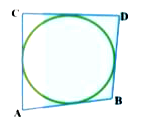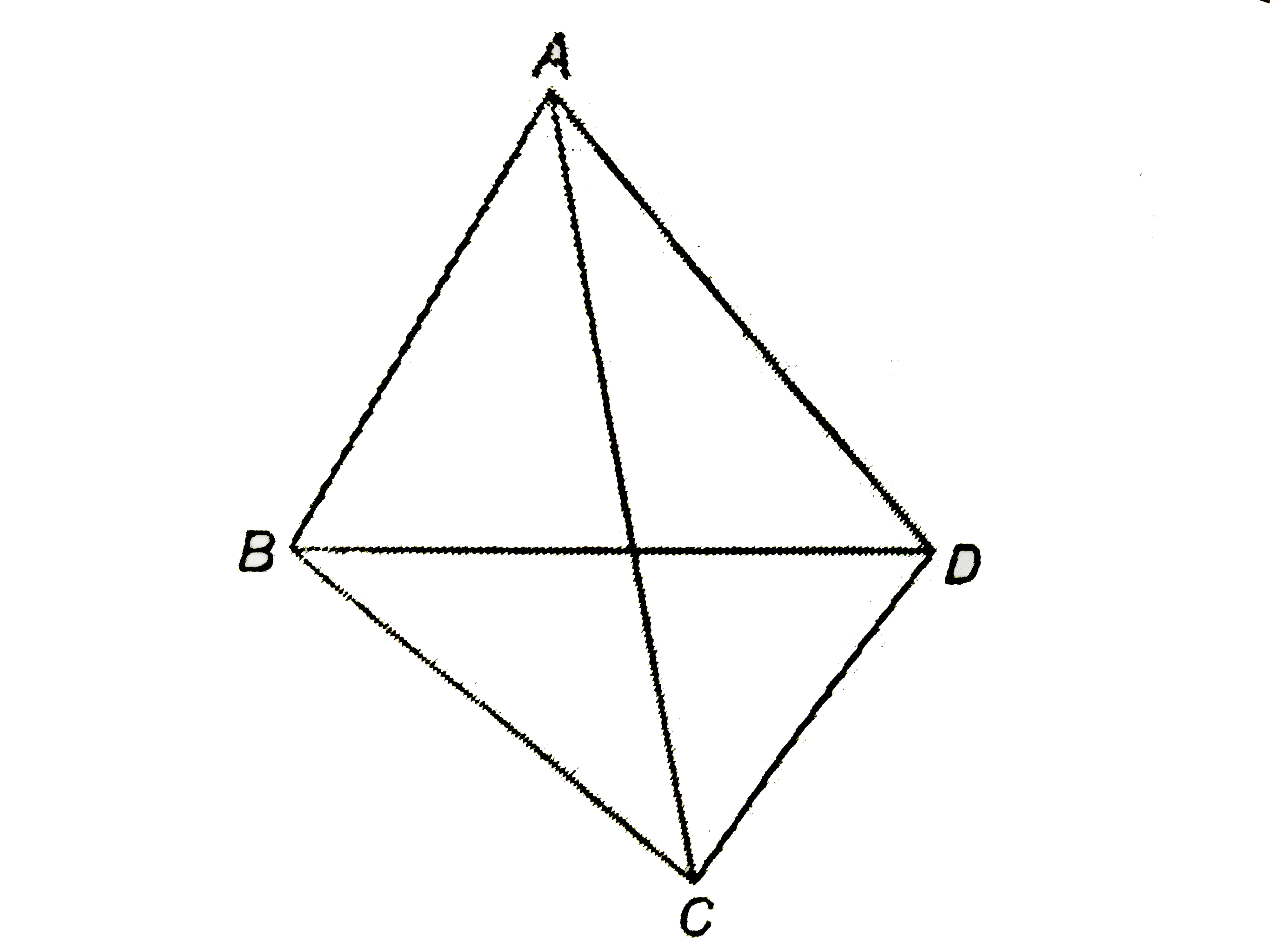A circle touches all the four sides of a quadrilateral ABCD. Prove that AB + CD = BC + DA
To prove that in a quadrilateral ABCD, where a circle touches all four sides, the relation AB+CD=BC+DA holds, we can follow these steps:
Step 1: Understand the Configuration
We have a quadrilateral ABCD with a circle inscribed in it, meaning the circle touches all four sides at points P, Q, R, and S.
Step 2: Identify the Points of Tangency
Let:
- The point where the circle touches side AB be P.
- The point where the circle touches side BC be Q.
- The point where the circle touches side CD be R.
- The point where the circle touches side DA be S.
Step 3: Use the Property of Tangents
From the properties of tangents drawn from an external point to a circle, we know that:
- The lengths of tangents drawn from the same external point to a circle are equal.
Thus, we can write:
1. AP=AS (from point A)
2. BP=BQ (from point B)
3. CQ=CR (from point C)
4. DR=DS (from point D)
Step 4: Express the Sides of the Quadrilateral
Now, we can express the lengths of the sides of the quadrilateral in terms of the tangents:
- AB=AP+BP
- BC=BQ+CQ
- CD=CR+DR
- DA=DS+AS
Step 5: Substitute the Tangent Lengths
Using the equalities from Step 3, we can substitute:
- AB=AP+BP
- CD=CR+DR
- BC=BQ+CQ
- DA=DS+AS
Step 6: Combine the Lengths
Now, we can combine the lengths:
- Left-hand side:
AB+CD=(AP+BP)+(CR+DR)
- Right-hand side:
BC+DA=(BQ+CQ)+(DS+AS)
Step 7: Group the Terms
Now, we can group the terms:
- Left-hand side:
AB+CD=AP+CR+BP+DR
- Right-hand side:
BC+DA=BQ+DS+CQ+AS
Step 8: Recognize Equalities
From the properties of tangents:
- AP=AS
- BP=BQ
- CR=CQ
- DR=DS
Step 9: Conclude the Proof
Thus, we have:
AB+CD=BC+DA
This proves the required relation.
We have a quadrilateral ABCD with a circle inscribed in it, meaning the circle touches all four sides at points P, Q, R, and S.
Let:
- The point where the circle touches side AB be P.
- The point where the circle touches side BC be Q.
- The point where the circle touches side CD be R.
- The point where the circle touches side DA be S.
From the properties of tangents drawn from an external point to a circle, we know that:
- The lengths of tangents drawn from the same external point to a circle are equal.
1. AP=AS (from point A)
2. BP=BQ (from point B)
3. CQ=CR (from point C)
4. DR=DS (from point D)
Now, we can express the lengths of the sides of the quadrilateral in terms of the tangents:
- AB=AP+BP
- BC=BQ+CQ
- CD=CR+DR
- DA=DS+AS
Using the equalities from Step 3, we can substitute:
- AB=AP+BP
- CD=CR+DR
- BC=BQ+CQ
- DA=DS+AS
Now, we can combine the lengths:
- Left-hand side:
AB+CD=(AP+BP)+(CR+DR)
- Right-hand side:
BC+DA=(BQ+CQ)+(DS+AS)
Now, we can group the terms:
- Left-hand side:
AB+CD=AP+CR+BP+DR
- Right-hand side:
BC+DA=BQ+DS+CQ+AS
From the properties of tangents:
- AP=AS
- BP=BQ
- CR=CQ
- DR=DS
Thus, we have:
AB+CD=BC+DA
This proves the required relation.
Topper's Solved these Questions
Similar Questions
A circle touches all the four sides of a quadrilateral ABCD. If AB = 9 cm, BC= 8 cm and CD = 12 cm, then what is DA equal to?
View SolutionIn Figure 3, a circle touches all the four sides of a quadrilateral ABCD whose sides are AB = 6 cm, BC = 9 cm and CD = 8 cm. Find the length of side AD.
View Solution
Knowledge Check
In the figure, a circle touches all the four sides of a quadrilateral ABCD whose sides AB= 6.5 cm, BD= 5.4 cm and CD = 5.3 cm . The length of AC is :
 A4.6 cmB5.8 cmC6.2 cmD6.4 cm
A4.6 cmB5.8 cmC6.2 cmD6.4 cm
In Fig. 10.54, a circle touches all the four sides of a quadrilateral ABCD with AB=6cm , BC=7cm and CD=4cm . Find AD . (FIGURE)
View SolutionIf circle touches all the sides of a quadrilateral ABCD, if AB = 7 cm, CD = 3 cm, BC = 8.5 cm. Find the length of AD.
View SolutionIf the sides of a quadrilateral ABCD touch a circle prove that
AB+CD=BC+AD.
View SolutionA circle touches all sides of quadrilateral ABCD then which one of these is true :
View SolutionThe given figure shows a quadrilateral ABCD. Prove that :
AB+BC+CD+DA>AC+BD

View SolutionIn cyclic quadrilateral ABCD, AD∣∣BC. Prove that AB = CD.
View SolutionIn a quadrilateral ABCD, show that (AB+BC+CD+DA)<2(BD+AC).
View Solution
